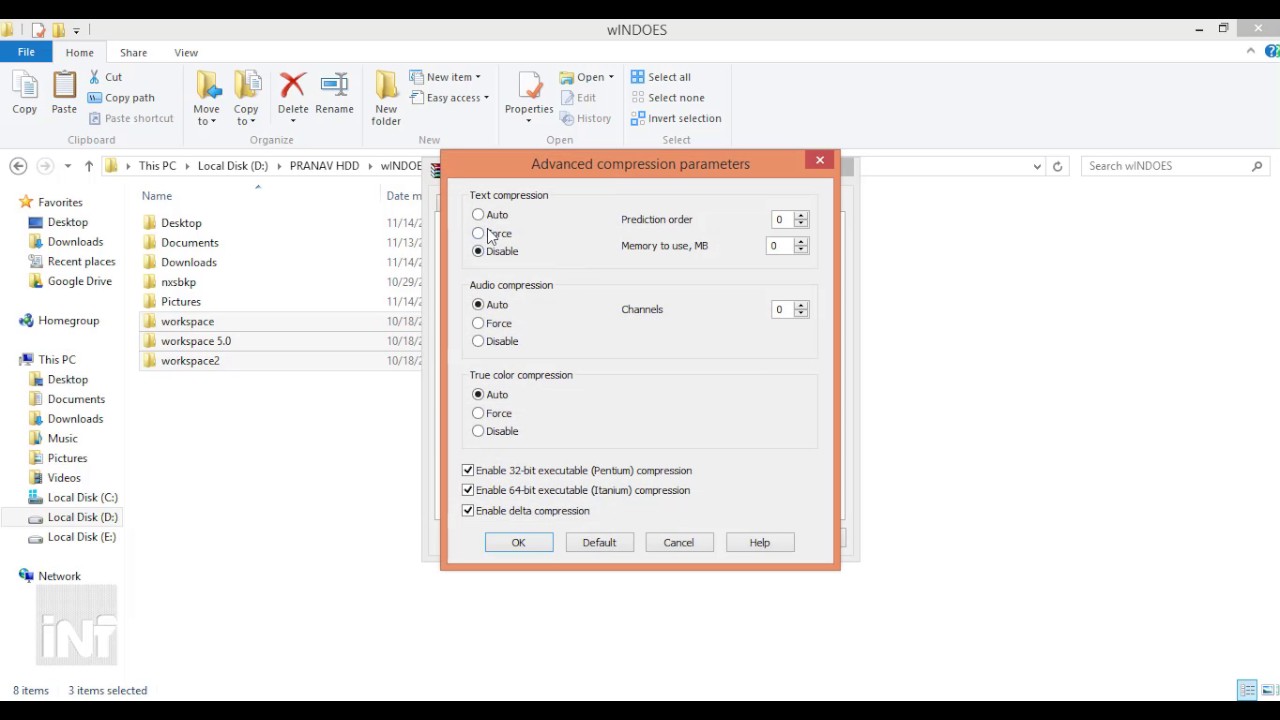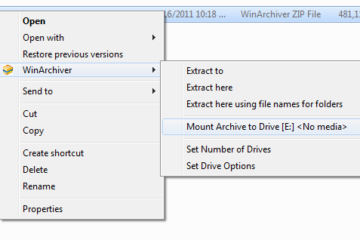In the digital age, managing large files efficiently is crucial, especially when storage space and bandwidth are at a premium. Whether you’re an individual looking to streamline your personal files or a professional handling massive datasets, the ability to compress files from gigabytes to megabytes can make a significant difference. WinRAR, a powerful file compression tool, offers advanced algorithms and user-friendly features to help you achieve high compression ratios without sacrificing file integrity. This guide will walk you through the step-by-step process of using WinRAR to compress your files, ensuring that you can save space and improve data management effectively.
How to Highly Compress Files from GB to MB with WinRAR?
Compressing large files from gigabytes (GB) to megabytes (MB) can significantly reduce storage space and improve file transfer efficiency. WinRAR is a powerful tool that allows you to achieve high compression ratios. Here’s a detailed guide on how to do it:
Understanding WinRAR Compression Levels
WinRAR offers several compression levels, which determine the degree of compression applied to your files. The higher the compression level, the more time it takes to compress, but the smaller the resulting file size. Here are the compression levels available in WinRAR:
- Store: No compression, files are added as-is.
- Fastest: Minimal compression, fastest processing time.
- Fast: Balanced compression, good for everyday use.
- Normal: Standard compression, suitable for most files.
- Good: Higher compression, takes more time but reduces file size significantly.
- Best: Maximum compression, slowest processing time but smallest file size.
Selecting Files for Compression
To start the compression process, follow these steps:
- Open WinRAR.
- Navigate to the folder containing the files you want to compress.
- Select the files by clicking and holding the Ctrl key while clicking on each file, or drag to select multiple files.
- Right-click on the selected files and choose Add to archive….
Setting Compression Options
In the Archive name and parameters dialog, you can set various options:
- Archive format: Choose RAR for the highest compression ratio.
- Compression method: Select Best for maximum compression.
- Compression level: Choose Best for the highest compression.
- Dictionary size: Increase the dictionary size for larger files. For example, use 32 MB or 64 MB for large files.
- Split to volumes, bytes: If you need to split the archive into smaller parts, specify the size here.
Advanced Compression Techniques
For even better compression, consider these advanced techniques:
- Solid Archive: Check the Create solid archive option to compress all files as a single unit, which can improve compression for similar files.
- File Types: Certain file types compress better than others. Text files, for example, compress more efficiently than already compressed files like JPEGs or MP4s.
- Pre-Compression: Use tools like 7-Zip to pre-compress files before adding them to a WinRAR archive for even better results.
Verifying Compression Results
After compressing your files, it’s important to verify the results:
- Open the compressed archive in WinRAR.
- Check the file sizes and ensure they are significantly reduced.
- Extract the files to a temporary folder and compare the extracted files with the original files to ensure no data loss.
| Original File Size | Compressed File Size | Compression Ratio |
|---|---|---|
| 10 GB | 1 GB | 10:1 |
| 20 GB | 2 GB | 10:1 |
| 50 GB | 5 GB | 10:1 |
How to highly compress file size using WinRAR?

Choosing the Right Compression Level in WinRAR
To highly compress file size using WinRAR, the first step is to select the appropriate compression level. WinRAR offers several options: Store, Fastest, Fast, Normal, Good, and Best. For maximum compression, choose the Best option. This setting will take more time but will provide the smallest file size. Here’s how to set it:
- Open WinRAR and select the files or folders you want to compress.
- Click on the “Add” button to create a new archive.
- In the “General” tab, under the “Compression method” dropdown, select “Best”.
- Click “OK” to start the compression process.
Using Compression Formats for Optimal Results
WinRAR supports multiple compression formats, and choosing the right one can significantly impact the file size. The two main formats are RAR and ZIP. RAR generally provides better compression ratios, especially for multimedia files. To use RAR for optimal compression:
- Open WinRAR and select the files or folders you want to compress.
- Click on the “Add” button.
- In the “General” tab, under the “Archive format” dropdown, select “RAR”.
- Set the compression level to Best.
- Click “OK” to start the compression process.
Adjusting Dictionary Size for Better Compression
The dictionary size is a crucial factor in achieving high compression ratios. A larger dictionary size can lead to better compression, especially for large files. WinRAR allows you to set the dictionary size from 64 KB to 1 GB. For files larger than 100 MB, using a higher dictionary size can yield better results:
- Open WinRAR and select the files or folders you want to compress.
- Click on the “Add” button.
- In the “Advanced” tab, click on the “Compression” button.
- In the “Dictionary size” dropdown, select a higher value, such as 256 MB or 512 MB.
- Click “OK” to apply the settings and then click “OK” again to start the compression.
Splitting Large Files for Efficient Compression
Splitting large files into smaller volumes can improve compression efficiency and make them easier to manage. This is especially useful when dealing with very large files that need to be transferred or stored. To split files using WinRAR:
- Open WinRAR and select the files or folders you want to compress.
- Click on the “Add” button.
- In the “Split to volumes, size” field, enter the desired volume size, such as 500 MB or 1 GB.
- Set the compression level to Best.
- Click “OK” to start the compression process.
Removing Unnecessary Files Before Compression
Before compressing files, it’s a good practice to remove any unnecessary files or data. This can significantly reduce the final archive size. Unnecessary files might include temporary files, cache files, or duplicate files. Here’s how to prepare your files for compression:
- Navigate to the folder containing the files you want to compress.
- Delete any temporary files, cache files, or duplicates.
- Check for large files that are not needed and delete them if possible.
- Once the folder is cleaned, select the remaining files and folders.
- Open WinRAR, click on the “Add” button, and set the compression level to Best.
- Click “OK” to start the compression process.




